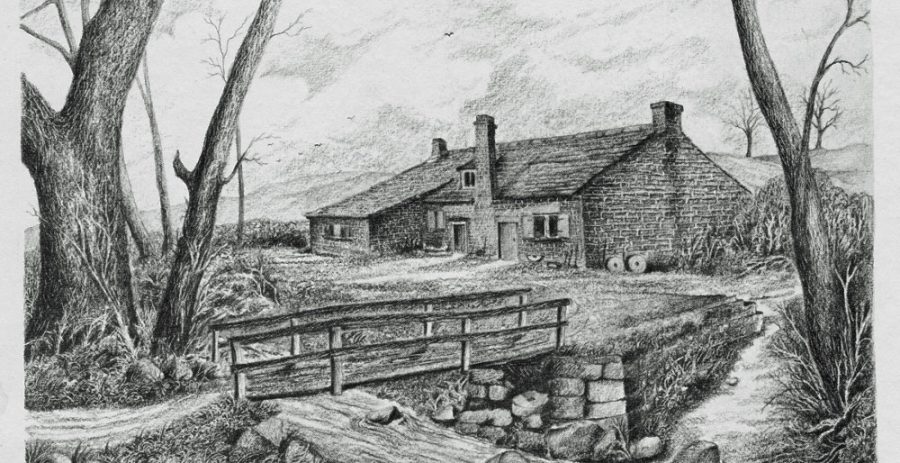
Introduction
Frank Wheel dates back to at least 1737, when the first lease was recorded. It was originally used for grinding cutlery but converted to a paper mill by 1854. From 1905 the site stood empty and most of the building was levelled.
The main sights here are the cascade of water at the weir and the trail running on a narrow path between the long, wide head goit and the river. Look out for ‘Frank’ the dinosaur tree, which lies across the water in the mill dam.
History (C. 1730s–1900s)
Also known as: Coppey Nook, Coppy Wheel, Fourth Coppey Wheel, Frank Paper Mill, Nether
Main trades: Cutlery grinding; paper mill.

The first lease for Frank Wheel was in 1737, to Richard Marshall and Stephen Parker. Marshall extended it in 1756 and in 1782 it was recorded as having 11 trows, employing 14 men, and an 18 ft 10 in (5.7 m) fall of water. In 1852 the Wheel was still being used for cutlery grinding, but by 1854 it had been converted to a paper mill. The last known lease on the Wheel, for 14 years, was recorded in 1889 between Sheffield Corporation and Horatio & Thomas Marsden. It was empty by 1905 and most of the Wheel workshop building was subsequently levelled, leaving few remains.
What's there now?
Located about 100 m upstream of the mill dam, the weir of uncut stones is in fairly good condition, providing a sparkling cascade of water when the river is high. The weir deflects water through a small inlet and into a long, wide head goit.
The wide overflow (now also forming an attractive waterfall) is situated at the west (head) end of the mill dam; grooves for washboards (used to raise the water level) can be seen in the stonework on either side. The overflow level was adjusted by the RVCG to allow more water to fill the dam (a delicate operation that took some time to get right because if it is raised too much the dam leaks). Part of the west end of the wheel building and part of a substantial wall that formed support for the pentrough can still be seen. The supporting wall of the Frank Wheel mill dam is unusual in that in parts it lacks the usual protection of an earth embankment.
The tail goit is culverted beneath the track to the east, and runs directly into the head goit of the Wolf Wheel mill dam (next downstream).
A stone monument at the bottom of the bank by the path commemorates the first ten years of the RVCG.
Nature and wildlife at Frank Wheel
The Frank Wheel mill dam is heavily shaded by Alder, Beech, Hazel and Oak. As the overflow is close to the head goit entry, the water is mostly stagnant, giving a feeling of lifelessness. Some children call it the ‘dinosaur pond’ due to the fallen tree that sits halfway across the dam, with its branches in the water. This gives the dam an eerie atmosphere especially on a cold frosty morning with the mist still hovering over the water. Dog’s Mercury and Ground Elder are abundant on the site of the former buildings. Image: Frank the dinosaur tree Sit a while and watch for birds – if you sit still enough and long enough you may well see a Kingfisher, apparently attracted by the good supply of small fish (e.g. sticklebacks) and invertebrates in the water. The Frank weir is a favourite spot for the Grey Heron to sit watching for prey.
On the north bank of the river, near the weir, there is an interesting patch of woodland where some large Beeches are mixed with Oak and Sycamore, as well as a few tall pine trees. Look out for Bluebells and the attractive grass Wood Melick.
The large grassy area just upstream of the Frank Wheel weir has two large oak trees in the middle, and is a good place to look for butterflies on a sunny day and bats on a summer evening. Blackbirds and Song Thrushes may be seen feeding. Robins are often heard singing, particularly in autumn and winter when other birds are quiet. Look out for molehills here too. This area is managed as part of a covenant agreement set up in around 1915 when Sheffield City Council acquired the land from the Norfolk Estate and King Edward VII hospital was built (on the north side of Rivelin Valley Road).
